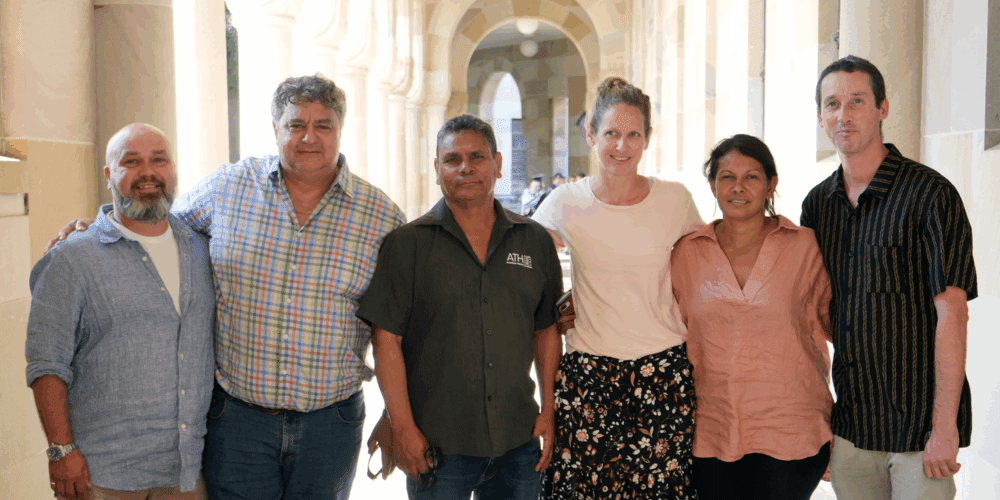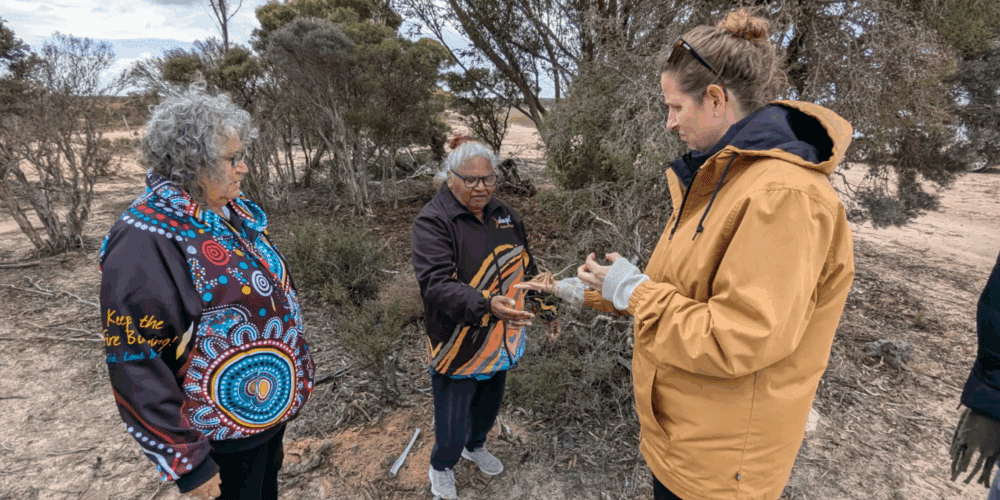Indigenous knowledge has sustained land, culture and life for generations. From understanding seasonal changes to managing resources, it offers a deep, placed-based way of caring for Country – the way it was always meant to be.
Now more than ever, we’re seeing just how critical Indigenous knowledge is in responding to growing environmental challenges.
Dr Teagan Shields is helping lead the way for Indigenous knowledge to shape research and real outcomes on the ground. She’s working to ensure Indigenous-led use of traditional knowledge is put front and centre of managing, protecting and healing Country across land and sea.

A proud Arabana woman who grew up in Awabakal Country, Newcastle, Dr Shields has long worked at the intersection of Country and policy.
For the past 15 years, Dr Shields has worked in strategic policy reform, community engagement and biodiversity conservation across NSW, ACT and WA.
Just last year, she completed her PhD investigating the systemic changes needed to empower Aboriginal and Torres Strait Islander land and sea managers in biodiversity conservation.
Her youngest son was only six weeks old when she began her PhD but Dr Shields said she couldn’t ignore the need to prove that Indigenous knowledge is the answer to conservation issues facing Australia.
“There’s this assumption that Western science alone holds all the answers, but Indigenous people and knowledge have been caring for Country for thousands of years,” Dr Shields said.
“Our knowledge has stood the test of time and it shouldn’t need to be validated through a Western lens to be taken seriously. That’s what I’m hoping to achieve through my research.”
‘Let us lead’
Dr Shields is now leading two major national projects through the National Environmental Science Program (NESP), alongside Curtin’s Professor Stephen van Leeuwen – Australia’s first Indigenous Chair for Biodiversity and Environmental Science.

Through their work, they are laying the groundwork for a legacy where Indigenous knowledge is integral to environmental policy and practice.
“These projects are driven by mob. It’s about making sure the research starts with community, not just ends there.”
“One of these projects is focused on recognising culturally significant entities – the plants, animals and places that hold deep cultural meanings to Indigenous communities but are so often excluded from Western frameworks,” Dr Shields said.
“These can be bush foods, totem animals, plants used in ceremony or medicine.”
“At the moment, there is no clear national definition for what counts as a culturally significant species or place. That means they’re often not considered when it comes to things like threatened species listing or environmental approvals.”
“Kangaroos, for example, play an important part in Aboriginal cultures, dating back thousands of generations. But they’re not a threatened species, so while they’re significant to mob, they’re not currently protected under any current conservation laws.”
“This project is the first of its kind which will ensure that Indigenous knowledge and considerations of cultural significance are integral parts of environmental policy-making processes and recovery strategies across Australia.”

The second project is the National Indigenous Environment Research Network (NIERN) designed to strengthen Indigenous leadership in environmental research.
“For too long, researchers have received funding first then come to community with their ideas. NIERN flips that model,” Dr Shields said.
“The mob on the ground develop the ideas on how they want to manage Country, then we find the right researchers to support them.”
The project is driven by Indigenous leaders in the environment and land management space, together with researchers and government.
Alongside her research, Dr Shields currently serves as the Deputy Chair of the Federal Minister for the Environment’s Indigenous Advisory Committee (IAC).
In this role, she has helped influence Indigenous engagement and inclusion across major national environmental programs including the National Environmental Standards, Regional Planning, National Environmental Science Program, State of the Environment, Indigenous Protected Areas and Indigenous land and sea rangers.
“Our people already know how to care for Country. What we need are the systems and structures that support that knowledge and let it lead,” Dr Shields said.
“This is more than just protecting biodiversity. We’re strengthening culture, community and Australia’s future.”
This piece was featured in Impact Focus – a quarterly newsletter bringing you the latest in Curtin research. Sign up here to get it delivered straight to your inbox!


